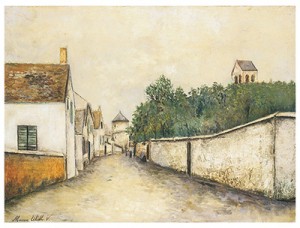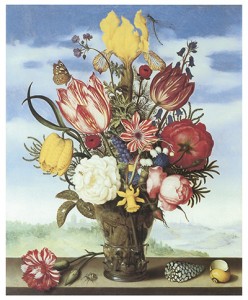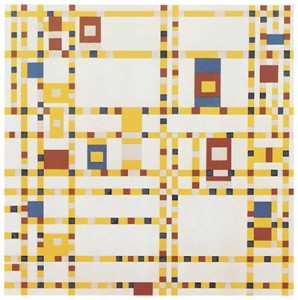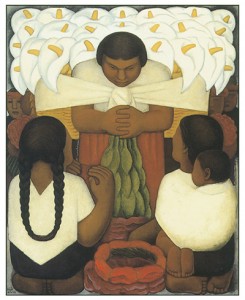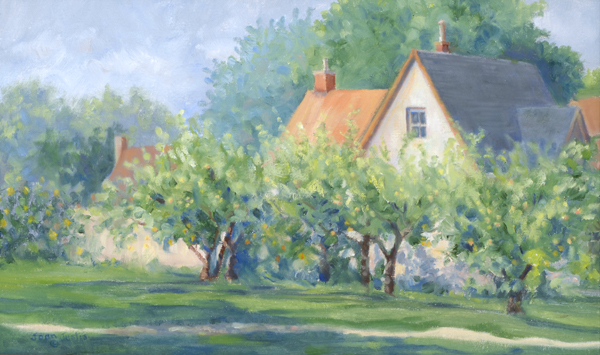Repetition can be found in all forms of art. In a painting composition repetition creates a visual rhythm against which the artist can drop in accents of interest. In poetry and literature we enjoy repeating a phrase. It becomes familiar and rolls off our tongue, so that it provides contrast or counterpoint to something surprising in the poem. Repetitious traditions unify families and communities giving a sense of security and order.
It is the same with visual art. We feel a sense of order when we view a painting that has a visual repetition in the composition. Just as the golden mean has become a common standard in compositional planning, so has the number three become a standard for repeating an art element in a painting. Click on Utrillo’s painting and find repetitions of lines in combinations of three.
Ambrosius Bosschaert, a Dutch vanitas artist, actually uses a triangle repeatedly in positioning the colors of the flowers. You will find three yellow flowers, three roses, three striped flowers, and three small red ones. The whole composition sits on three points.
Piet Mondrian uses repetition of shape in Broadway Boogie-Woogie. You will find three red rectangles with pink interiors and three yellow with pink interiors. There are three blue squares and three blue rectangles. He has used the three primaries as the dominant colors. This very busy, dancing composition does not fly apart, because of repetition punctuated with pink squares.
We have looked at repetition of line, colors, and shapes. Such repetition has made them cohesive. But always there has been something novel to add variety and interest to the composition.
Diego Rivera’s painting entitled Flower Day repeats a high yellow value three times creating a triangle. However, the repeated white lilies are fit into a rectangle adding an element of dissimilarity, so that our brain is actively working between the triangle and the rectangle. There are also three red shapes that pull us visually into an inverted triangle.
In my painting The Neighbor’s Apple Trees, I was careful to use repetition of texture or brushstroke style to add continuity to the painting. As you paint consider repetition of texture, shape, line, color, and value. Some or all of these will pull your image together and make it one painting, instead of puzzle pieces. Be certain to strategically drop in a visual surprise to create dynamic variety.
This original painting and a giclee print are available. Contact joan@joanjustis.com.

